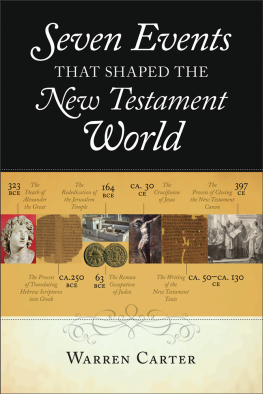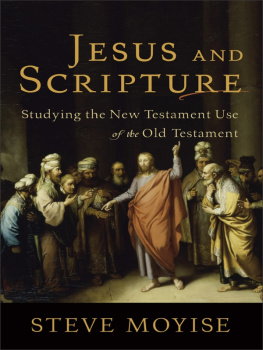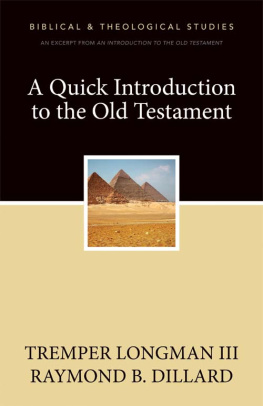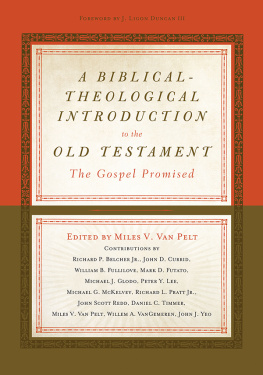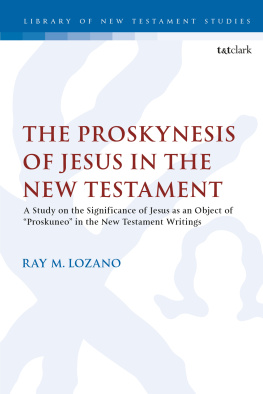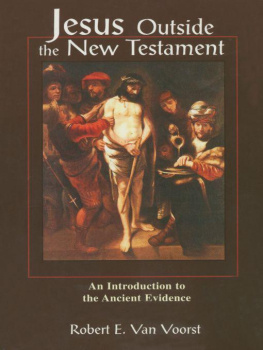
2013 by Warren Carter
Published by Baker Academic
a division of Baker Publishing Group
P.O. Box 6287, Grand Rapids, MI 49516-6287
www.bakeracademic.com
Ebook edition created 2013
All rights reserved. No part of this publication may be reproduced, stored in a retrieval system, or transmitted in any form or by any meansfor example, electronic, photocopy, recordingwithout the prior written permission of the publisher. The only exception is brief quotations in printed reviews.
ISBN 978-1-4412-4075-0
Library of Congress Cataloging-in-Publication Data is on file at the Library of Congress, Washington, DC.
Unless otherwise indicated, Scripture quotations are from the New Revised Standard Version of the Bible, copyright 1989, by the Division of Christian Education of the National Council of the Churches of Christ in the United States of America. Used by permission. All rights reserved.
Scripture quotations labeled NIV are from the Holy Bible, New International Version. NIV. Copyright 1973, 1978, 1984, 2011 by Biblica, Inc. Used by permission of Zondervan. All rights reserved worldwide. www.zondervan.com
Scripture quotations labeled RSV are from the Revised Standard Version of the Bible, copyright 1952 [2nd edition, 1971] by the Division of Christian Education of the National Council of the Churches of Christ in the United States of America. Used by permission. All rights reserved.
The internet addresses, email addresses, and phone numbers in this book are accurate at the time of publication. They are provided as a resource. Baker Publishing Group does not endorse them or vouch for their content or permanence.
Contents
Cover
Title Page
Copyright Page
List of Illustrations
Preface
Abbreviations
Introduction
1. The Death of Alexander the Great (323 BCE)
2. The Process of Translating Hebrew Scriptures into Greek (ca. 250 BCE*)
3. The Rededication of the Jerusalem Temple (164 BCE)
4. The Roman Occupation of Judea (63 BCE)
5. The Crucifixion of Jesus (ca. 30 CE)
6. The Writing of the New Testament Texts (ca. 50ca. 130 CE)
7. The Process of Closing the New Testament Canon (397 CE)
Conclusion
Notes
Index
Back Cover
Illustrations
1.1 Map of Alexanders empire
1.2 Sarcophagus with a depiction of Alexander fighting the Persians
1.3 Theater at Ephesus
2.1 Ptolemy II
2.2 Parts of Deuteronomy translated from Hebrew into Greek
3.1 Image of Antiochus IV Epiphanes on a coin
3.2 Image of Judas Maccabeus
3.3 The martyrdom of Eleazar
3.4 Menorah
4.1 Map of Judea
4.2 Image of Pompey the Great
4.3 The Jerusalem temple
4.4 Head of Gaius Caligula
5.1 Pilate inscription
5.2 Heel bone and nail
5.3 Image of crucifixion
6.1 Paul writing
6.2 Corinth
6.3 Images of the fall of Jerusalem from the Arch of Titus
6.4 Matthew writing his Gospel
6.5 Luke writing his Gospel
6.6 Image of John
7.1 The great altar of Pergamum
7.2 Manuscript Codex Vaticanus
Preface
F irst, a word of explanation. In this book I refer to dates using the abbreviation of BCE and CE. These abbreviations may not be familiar to some readers. BCE stands for before the Common Era. CE is an abbreviation for Common Era and replaces the perhaps more familiar AD.
Second, another word of explanation. You will note that the second of the seven events has a date inscribed as ca. 250 BCE*. The asterisk attached to a number looks a little unusual. At the beginning of chapter 2, I explain the asterisks function as signifying a date that is approximate, legendary, and a process.
Third, a word of appreciation. I want to thank Kendi Mohn and Amanda Henderson, two students at Brite Divinity School in Fort Worth, for their careful reading of the manuscript of this book. Their insightful feedback has been very helpful and has improved it considerably.
Abbreviations
| General and Bible Versions |
| * | Used to designate a date as approximate, legendary, and a process |
| BCE | before the Common Era |
| ca. | circa, approximately |
| CE | Common Era |
| cf. | compare |
| chap(s). | chapter(s) |
| e.g. | for example |
| esp. | especially |
| et al. | and others |
| idem | the same; that is, by the same author |
| L | Lukes special source |
| LXX | Septuagint, Greek translation of Hebrew Bible |
| M | Matthews special source |
| NIV | New International Version (2011) |
| Chester Beatty papyrus, with Gospels and Acts, 2nd to 3rd century |
| Q | Quelle , hypothetical sayings source used by Matthew and Luke |
| RSV | Revised Standard Version |
| trans. | translator, translated by, translation |
| v(v). | verse(s) |
| Old Testament |
| Gen. | Genesis |
| Exod. | Exodus |
| Lev. | Leviticus |
| Num. | Numbers |
| Deut. | Deuteronomy |
| Josh. | Joshua |
| Judg. | Judges |
| Ruth | Ruth |
| 12 Sam. | 12 Samuel |
| 12 Kings | 12 Kings |
| 12 Chron. | 12 Chronicles |
| Ezra | Ezra |
| Neh. | Nehemiah |
| Esther | Esther |
| Job | Job |
| Ps(s). | Psalm(s) |
| Prov. | Proverbs |
| Eccles. | Ecclesiastes |
| Song | Song of Songs |
| Isa. | Isaiah |
| Jer. | Jeremiah |
| Lam. | Lamentations |
| Ezek. | Ezekiel |
| Dan. | Daniel |
| Hosea | Hosea |
| Joel | Joel |
| Amos | Amos |
| Obad. | Obadiah |
| Jon. | Jonah |
| Mic. | Micah |
| Nah. | Nahum |
| Hab. | Habakkuk |
| Zeph. | Zephaniah |
| Hag. | Haggai |
| Zech. | Zechariah |
| Mal. | Malachi |
| Apocryphal/Deuterocanonical Books |
| 14 Macc. | 14 Maccabees |
| Sir. | Sirach/Ecclesiasticus |
| New Testament |
| Matt. | Matthew |
| Mark | Mark |
| Luke | Luke |
| John | John |
| Acts | Acts |
| Rom. | Romans |
| 12 Cor. | 12 Corinthians |
| Gal. | Galatians |
| Eph. | Ephesians |
| Phil. | Philippians |
| Col. | Colossians |
| 12 Thess. | 12 Thessalonians |
| 12 Tim. | 12 Timothy |
| Titus | Titus |
| Philem. | Philemon |
| Heb. | Hebrews |
| James | James |
| 12 Pet. | 12 Peter |
| 13 John | 13 John |
| Jude | Jude |
| Rev. | Revelation |

